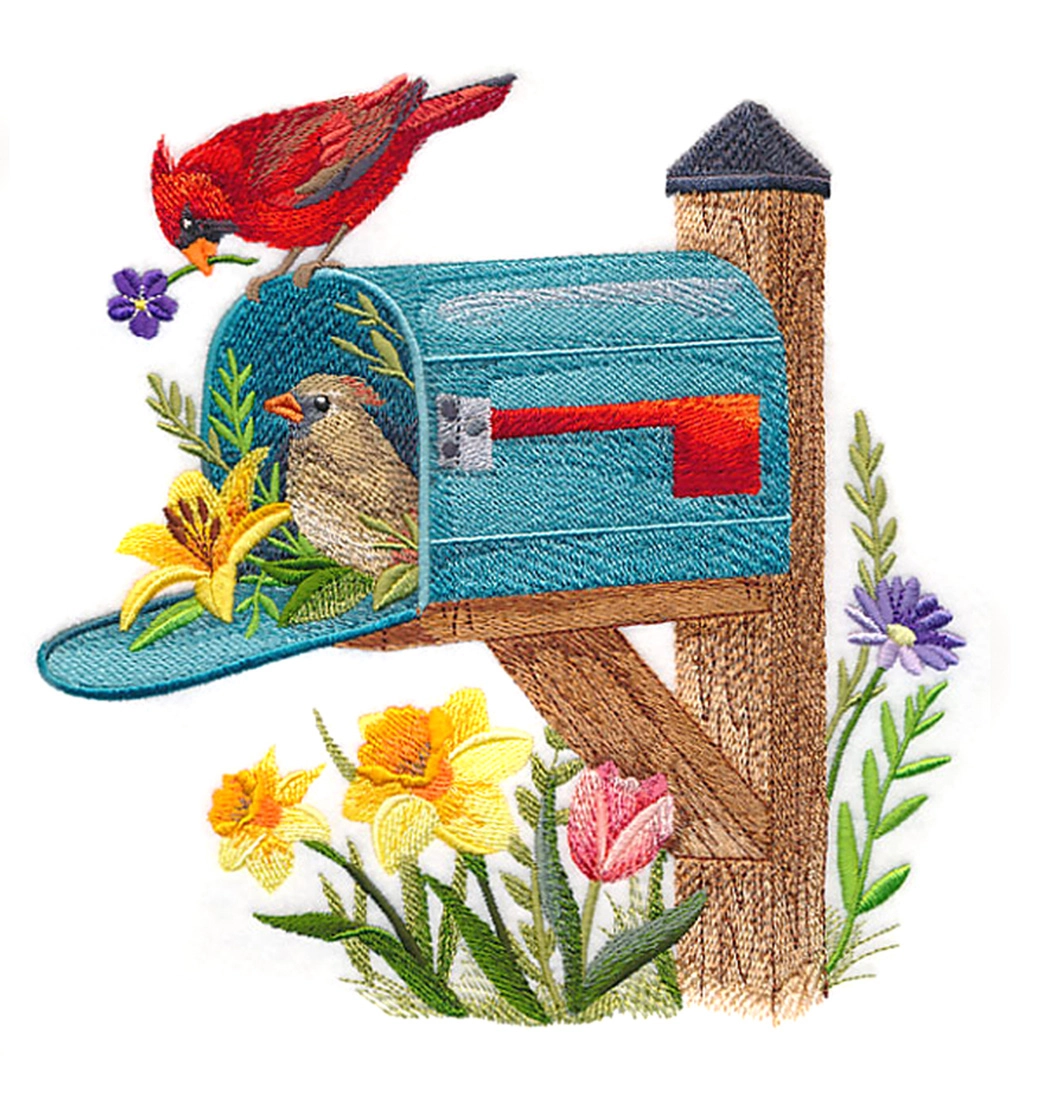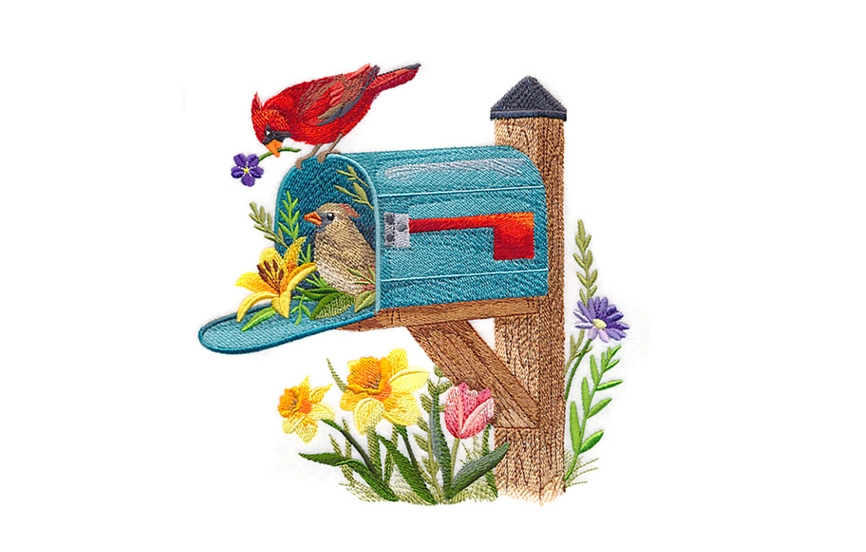Fall into autumn with a splendid autumn abundance table runner! Combine your favorite embroidery designs with hand-appliqued leaves and colorful fabrics for a table runner you'll go wild for.
This beautiful autumn table runner was specially created to coordinate with the autumn abundance placemat, September's installment of the Placemat of the Month series.
Read below for these free project instructions, then click here for instructions on how to create coordinating autumn abundance placemats.
You love the Placemat of the Month series, so once per quarter, we're creating a bonus coordinating table runner to spark your creativity. The autumn abundance table runner is the third installment of 2011 and perfectly complements September's autumn abundance placemat. Get started today!
Other table runner projects in this series include:
January - Snowball Block Placemat
February - Lots of Love Placemat
March - Patchwork Placemat & Patchwork Table Runner
April - Spring Pinwheel Placemat
May - Sunflower Fiesta Placemat
June - Summertime Trapunto Placemat & Summertime Trapunto Table Runner
July - Crafty Cravings Placemat
August - Puppy Love Placemat
October - Sumi-e Embroidered Placemat
November - Give Thanks Pocket Placemat
December - Rudolph's Run Placemat & Rudolph's Run Table Runner
Supplies
Supplies Needed:
**1 1/2 yards solid colored quilter's cotton (for embroidered blocks and back)
**1 1/2 yards solid colored quilter's cotton (for borders)
**3 fat quarters of print quilter's cotton (for inner striped sections)
**Small pieces of fabric (for leaves - we used suede cloth)
**Batting (we used high loft polyester batting)
**Double stick fusible web
**Medium-weight cutaway stabilizer
**Temporary spray adhesive
**Air-erase pen (or other marking tool)
**Straight edge
**Quilting cutting mat
**Rotary cutter
**Nylon monofilament thread
**Needle and thread for some hand sewin
Designs used:
Northwoods Silhouette Grizzly Bear - Small
Northwoods Silhouette Heron - Small
Northwoods Silhouette Deer - Small
Light Autumn Leaf - Small
Crisp Autumn Leaf - Small
Cool Autumn Leaf - Small
These designs are also available in design packs:
A Northwoods Animal Silhouettes Design Pack - Large, Medium, Small
A Light and Lovely Leaves Design Pack - Large, Small
Finished Size:
52 inches wide by 12 3/4 inches high
Project Tips:
We chose suede cloth for our leaves. Suede cloth is a tightly woven fabric that does not fray and will keep the leaf shapes looking crisp.
Designs Used
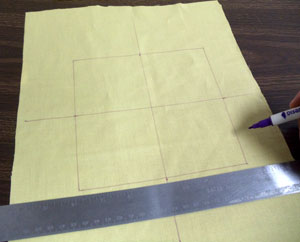
First, we will prepare the fabric for the embroidered blocks. Cut a piece of the solid colored fabric a couple of inches larger than your hoop (we cut our fabric about 10 inches wide by 10 inches high). Using an air-erase pen (or other marking tool), draw a 6 1/2 inch by 6 1/2 inch square in the center of the fabric. Also, mark the center of each side of the shape by measuring and dividing by two. Draw lines to connect the marks - where the lines meet is the exact center of the shape.

Create a paper template of the design by printing it at full size using embroidery software. If you don't have embroidery software, you can cut a piece of paper the shape and dimensions of the design to help with placement and centering. If you'd like a recommendation for an embroidery program that can make templates, consider Embird from www.Embird.com.
Poke a hole in the center of the template and align it with the center point on the fabric. Make sure that the design fits well within the shape -- there should be at least 3/4 inch space between the outer edges of the design and the edges of the shape. Remove the template. Spray a piece of medium-weight cutaway stabilizer with temporary adhesive and smooth the fabric on top. Hoop the fabric and stabilizer together by aligning the marks on the hoop with the lines on the fabric. Attach the hoop to the machine and load the design. Move the hoop so that the needle is directly over the center point on the fabric. Embroider the design.

When the design has finished cut out the shape. We left the stabilizer on the back of the embroidery to avoid the edges of the stabilizer showing through the fabric.
Repeat the hooping and embroidering process for a total of three blocks.

To print the leaf patterns, click here -- the patterns will print on four pieces of paper: three large shapes on three pieces of paper, and three small shapes on one piece of paper.

Cut out the shapes of the large leaf patterns. Spray a piece of medium-weight cutaway stabilizer with adhesive and smooth the fabric on top (we used suede cloth). Pin the pattern onto the fabric and trace the shape.

Remove the pattern and print a paper template of the design. Place the template inside the leaf shape. Position the outer edges of the design equal distances from the edges of the shape. Poke a hole in the center of the template and mark the fabric. Also, mark the horizontal and vertical axis points.

Remove the template and draw lines to connect the marks. Hoop the fabric and stabilizer together by aligning the marks on the hoop with the lines on the fabric. Attach the hoop to the machine and load the design. Move the hoop so that the needle is directly over the center point on the fabric. Embroider the design.
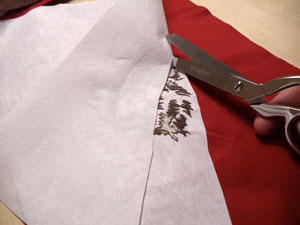
When the design has finished, carefully trim away the stabilizer on the back of the embroidery.

Smooth the fabric over a sheet of the double stick fusible web (wrong side facing the sheet) and cut out the shape. Leave the paper on the back of the fabric -- we'll apply the leaf a bit later on.
Repeat the pattern tracing, design placement, hooping, and embroidering process for a total of three large leaves.
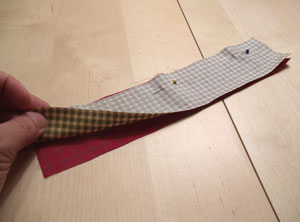
Next, we'll prepare the inner fabric for the first of the three sections of the table runner. To prepare the fabric for the top half of the striped inner section, cut three pieces of the print quilter's cotton 11 1/2 inches wide by 2 1/2 inches high. Align the first two pieces together with right sides facing. Pin in place and sew a 1/4 inch seam along one of the long sides.

Align the third piece with the middle piece, with right sides facing, and pin in place along the long raw side. Sew a 1/4 inch seam along the pinned edge.
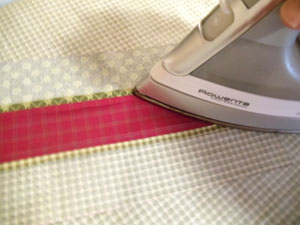
Press the back seams open with an iron.

Align the embroidered square with one of the short ends of the assembled striped pieces, with right sides facing. Pin in place and sew a 1/4 inch seam along the pinned edge. Press the seam.

To prepare the bottom half of the striped inner section, cut three pieces of print quilter's cotton 17 1/2 inches wide by 2 1/2 inches high. Assemble them just as you did the top section.
Align the top edge of the assembled bottom striped section with the bottom edge of the assembled top half. With right sides facing, pin in place and sew a 1/4 inch seam along the pinned edge. Then, press the seam.

To prepare the small leaves, cut out the small leaf patterns from the paper leaving some excess paper around the shapes. Cut a piece of fabric (we used suede cloth) a bit larger than the pattern pieces. Smooth the fabric on a sheet of the fusible web and pin the pattern piece on the fabric. Cut out the shape, remove the paper on the back, position the leaves on the fabric, and smooth in place. Also, remove the paper from the back of the embroidered large leaf and smooth it in place on the fabric -- leave at least one inch of space between the edges of the leaves and the outer edges of the fabric. Using a pressing cloth, iron the leaves in place -- follow the manufacturer's instructions on the fusible web packaging.
Repeat this process to create a total of three sections. We placed the embroidered block in different corners of each section.

To prepare the fabric for the side borders, cut four pieces of fabric 1 1/2 inches wide by 12 inches high. Align two of the side pieces with the side edges of the assembled middle section, with right sides facing. Pin in place, and sew a 1/4 inch seam along the pinned edges. Press the seams.

Align the remaining assembled sections with the outer edges of the borders. Pin in place, and sew a 1/4 inch seam along the pinned edges only, then press the seams.
Align the remaining two border pieces with the ends of the side sections. Pin in place, sew a 1/4 inch seam along the pinned edges, and press the seams.
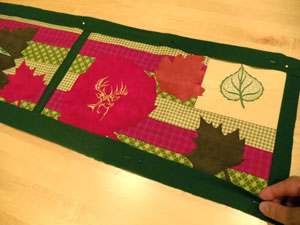
To prepare the fabric for the top and bottom borders, cut two pieces of fabric 53 1/2 inches wide by 1 1/2 inches high. Align the top and bottom pieces with the top and bottom edges of the assembled front panel, with right sides together. Pin, and sew a 1/4 inch seam along the pinned edges. Press the seams.

To prepare the fabric for the back of the table runner, lay the assembled front panel on top of the fabric, pin, and cut out the shape. Also, cut a piece of the batting just as you did for the back. Lay the batting flat and align the back fabric on top with the right side facing up. Then, align the front panel on top of the back fabric with the right sides facing (wrong side of the front panel faces up). Sew a 1/4 inch seam along the top, bottom, and one side edge -- leave the other side edge open for turning.

Turn the table runner right side out between the front and back panels (the batting will end up inside the table runner), and press the seams. Also, turn the fabric of the opening in 1/4 inch and press. Hand-sew the opening closed by stitching with a needle and thread.

With nylon monofilament in the needle, and matching thread in the bobbin (thread that matches the back fabric), quilt through all the layers by stitching along the existing seams of the front panel -- we stitched the seams around the leaves but did not stitch over the leaves.

Your delightful autumn table runner is now complete.

